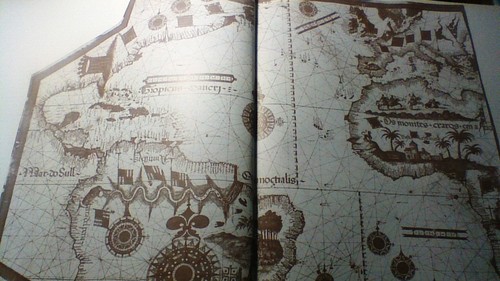


Also Tabularum Geographicarum Lusitanorum Specimen with. culminating in the publication of the Portugaliae Monumenta Cartographica (Corteso Mota 1960-2). The Portuguese believed that he reigned in Abyssinia and would support their proselytizing and commercial efforts. first edition 1960 five huge volumes + smaller index volume. The bearded figure with sword and shield on the eastern coast of the African continent represents the legendary Christian ruler Prester John. Also with forniture made to keep the work. Also Tabularum Geographicarum Lusitanorum Specimen with some colour plates of the PMC. Portuguese territories around the Indian Ocean are marked by a more detailed image of the Portuguese flag with its five shields or quinas. first edition 1960 five huge volumes + smaller index volume. The map by Portuguese cartographer Lopo Homem-Reinéis is part of the famous 1519 Atlas Miller, held in the Bibliothèque National in France. East Lansing : RID: 78-621797 ITEM : por00050 F Cortesao, Armando, 1891- 526.809 Portugaliae monumenta cartographica.

Low resolution image courtesy of Biblioteca estense universitaria Square-shaped red and blue Portuguese flags indicate the territories to which Portugal laid claim under the 1494 papal Treaty of Tordesilhas, which divided the non-Christian world between the Spanish and Portuguese.Ĭarta del Cantino. Teixeira da Mota (ed.), Portugaliae Monumenta Cartographica (Lisbon: Comisso para as Comemoraes do V Centenrio da Morte do Infante D. The six-volume Portugaliae Monumenta Cartographica re-cently issued by the Portuguese government to commemorate the quincentenary of Prince Henry the Navigator's death in 1460, is unquestionably the most elaborate reference work on cartography ever printed. DA MOTA, Portugaliae Monumenta Cartographica. 10 First (as Costadarida, Coast of Allada) in that of Ferno vaz Dourado, 1570, in: Armando Corteso and A. The 1502 Cantino map (below) shows the size of the Portuguese empire shortly after Vasco da Gama’s 1498 voyage around the Cape of Good Hope to India and Pedro Álvares Cabral’s founding of Brazil in 1500. Emanuela Casti and Federica Burini: Cartographic cataloguing and filing. The materials in this exhibit represent five centuries of the Portuguese-speaking diaspora with emphasis on history, literature, religion and the arts.īy the mid-sixteenth century, the Portuguese-speaking diaspora stretched from Brazil and the mid-Atlantic territories of the Azores and Madeira to Africa, India, China, Southeast Asia and Japan.


 0 kommentar(er)
0 kommentar(er)
